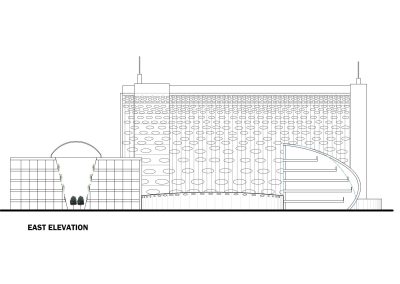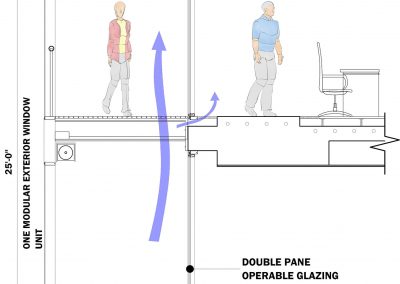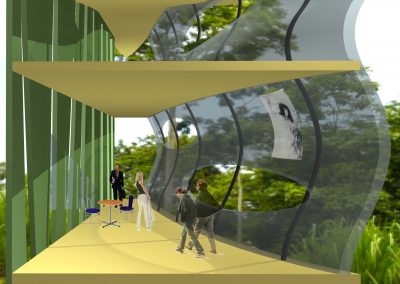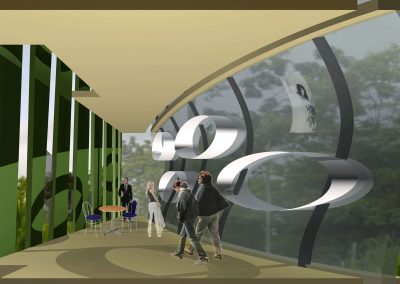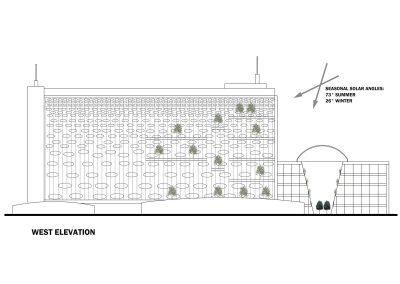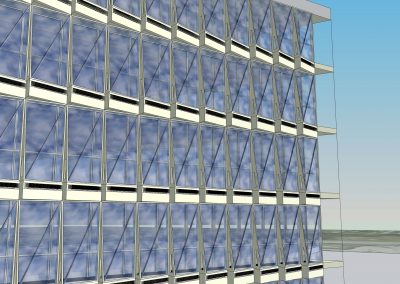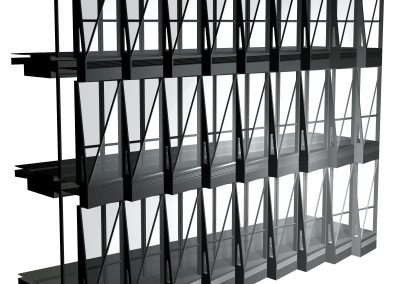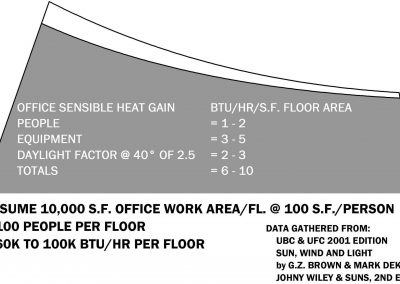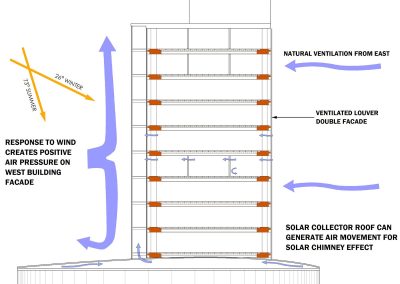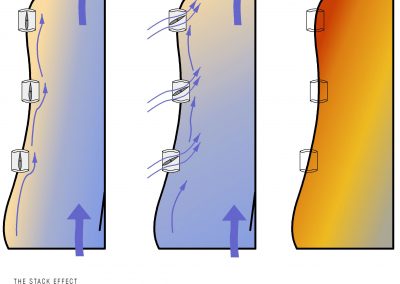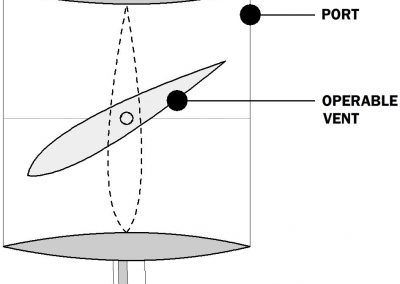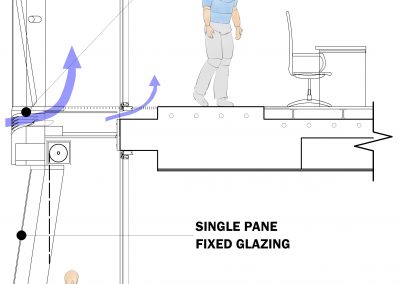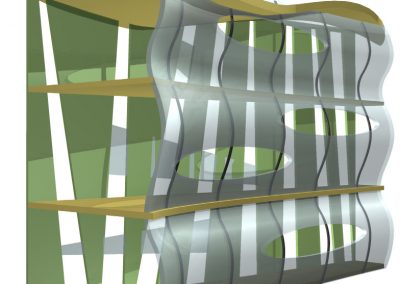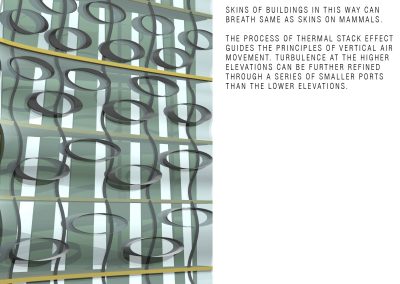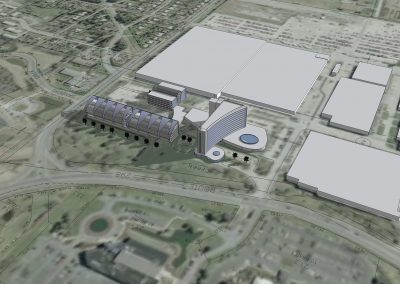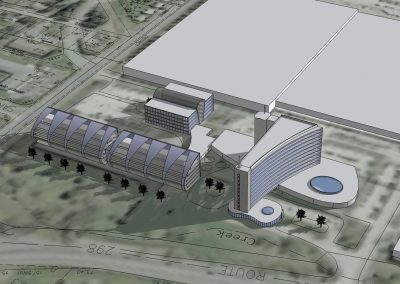The research involved sudying the fundamentals for double skin glass facades and apply the principles in a way that can enhance a persons experience of the built environment. Double skin glass façades can be a value added feature for high performance buildings provided they can be proven to reduce energy costs substantially enough to warrant their extra expense over standard curtain walls. Double Skin Glass Façades are an emerging aspect of high-performance building envelope systems. This project documents an architectural investigation of the building science and design of this type of envelope as a measure of sustainable energy efficient and green design practice. Ventilation modes and types of double skin glass façades in use today are identified and analyzed for thermal, wind and air flow, strategies. Natural ventilation is proposed as a means of tempering indoor climate as a measure of reducing the dependence on mechanical equipment. In addition, passive solar and air flow design principles are proposed as part of the criteria for evaluating the performance of double skin glass façades. The research is a contribution to the practice of maximizing indoor climate comfort for building occupants’ health and well being, while minimizing dependence on costly and limited non-renewable geological resources, such as fossil fuels. In order for the human race to continue indefinitely, our environmental impact must be less than or equal to the impact level that the earth can sustain . This is a principle of sustainable design and can be used to account for the management of natural resources and energy consumption . Energy from natural occurring renewable sources is free and preferable, the prime sources being sun and wind.


